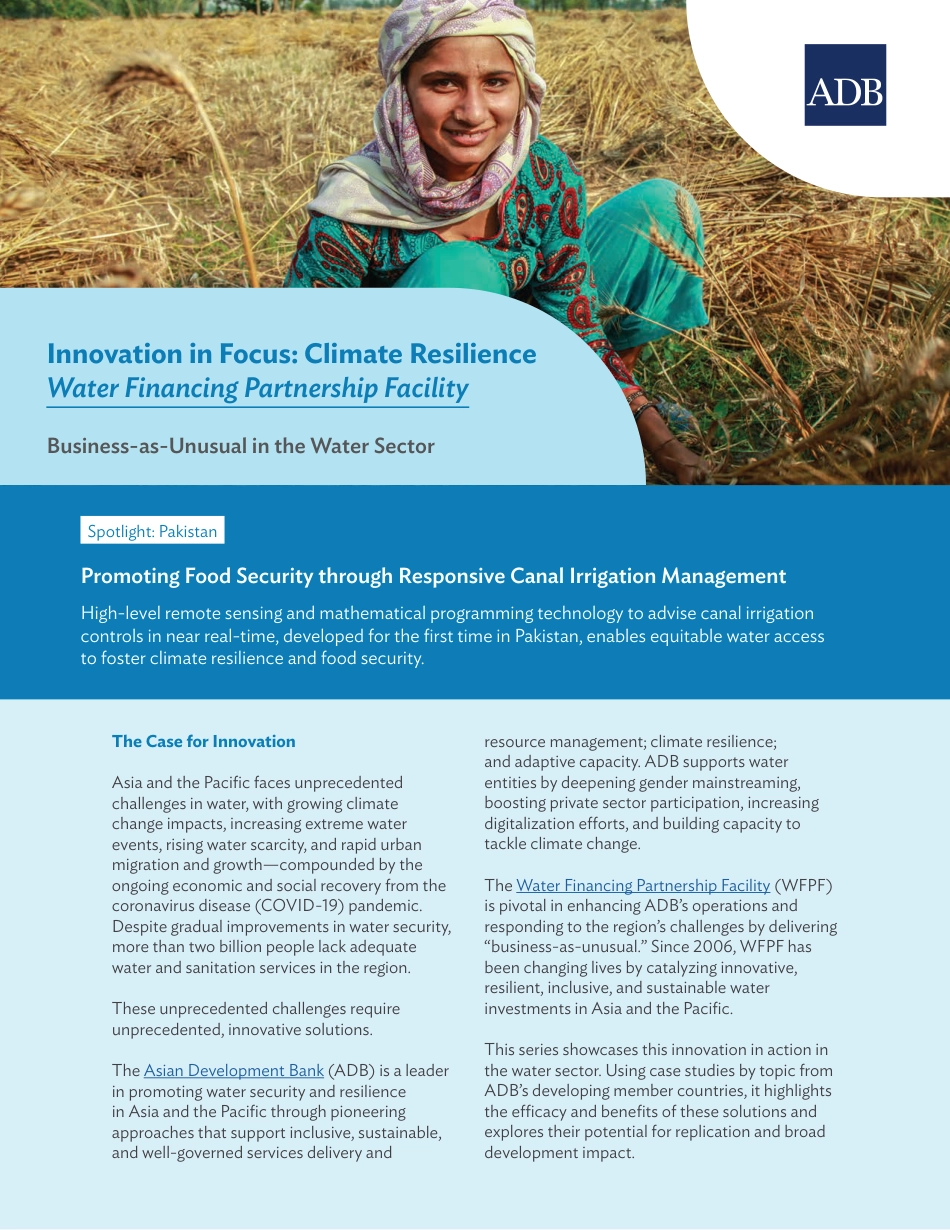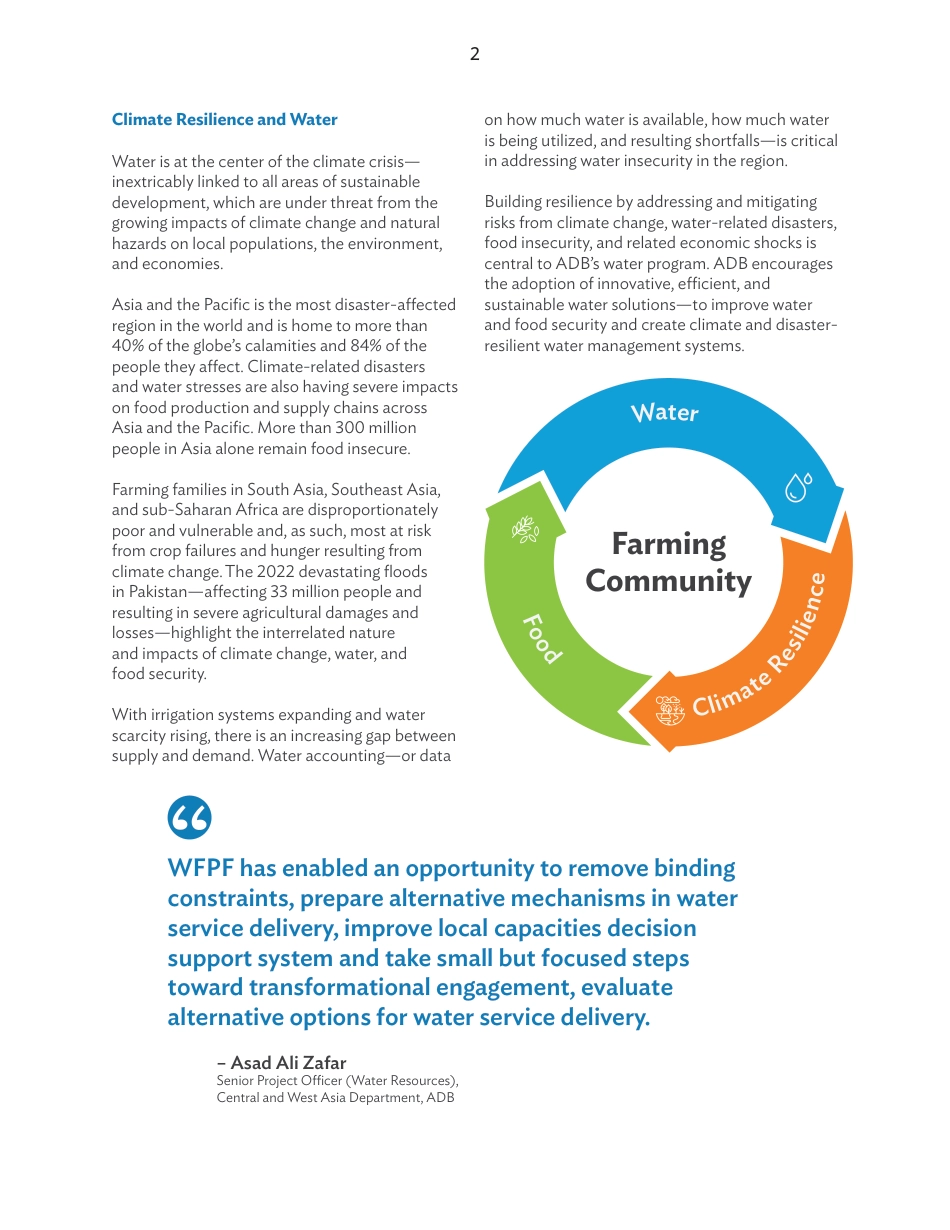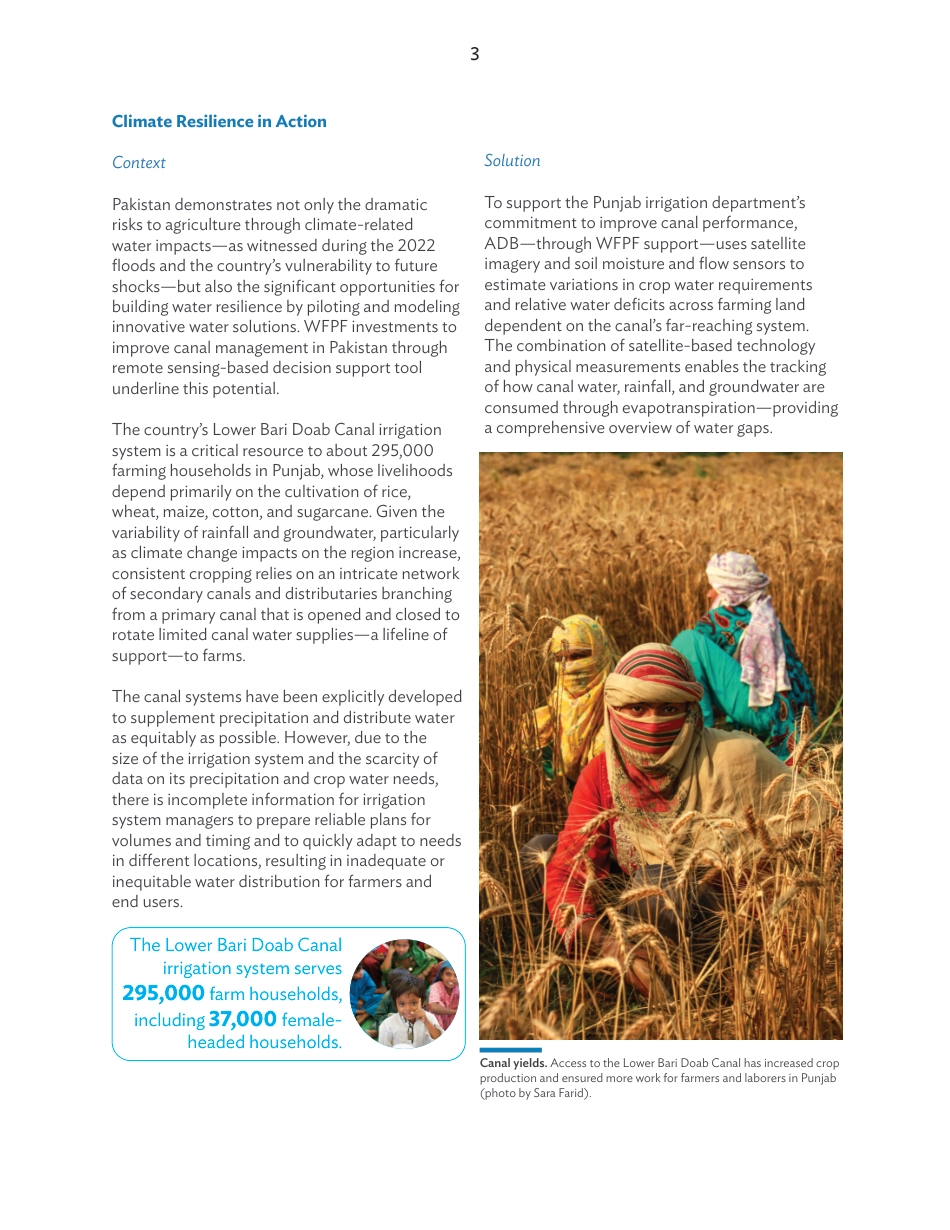Innovation in Focus: Climate ResilienceWater Financing Partnership FacilityBusiness-as-Unusual in the Water SectorPromoting Food Security through Responsive Canal Irrigation ManagementHigh-level remote sensing and mathematical programming technology to advise canal irrigation controls in near real-time, developed for the fi rst time in Pakistan, enables equitable water accessto foster climate resilience and food security.Spotlight: PakistanThe Case for InnovationAsia and the Pacifi c faces unprecedented challenges in water, with growing climatechange impacts, increasing extreme water events, rising water scarcity, and rapid urban migration and growth—compounded by the ongoing economic and social recovery from the coronavirus disease (COVID-19) pandemic. Despite gradual improvements in water security, more than two billion people lack adequatewater and sanitation services in the region.These unprecedented challenges require unprecedented, innovative solutions.The Asian Development Bank (ADB) is a leader in promoting water security and resilience in Asia and the Pacifi c through pioneering approaches that support inclusive, sustainable, and well-governed services delivery and resource management; climate resilience; and adaptive capacity. ADB supports water entities by deepening gender mainstreaming, boosting private sector participation, increasing digitalization eff orts, and building capacity to tackle climate change. The Water Financing Partnership Facility (WFPF) is pivotal in enhancing ADB’s operations and responding to the region’s challenges by delivering “business-as-unusual.” Since 2006, WFPF has been changing lives by catalyzing innovative, resilient, inclusive, and sustainable water investments in Asia and the Pacifi c. This ser...



